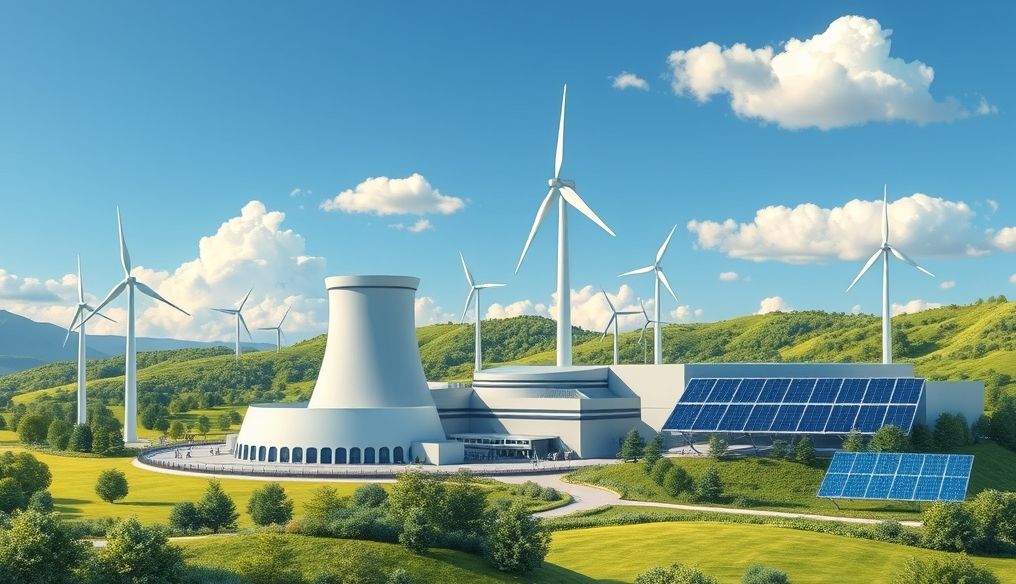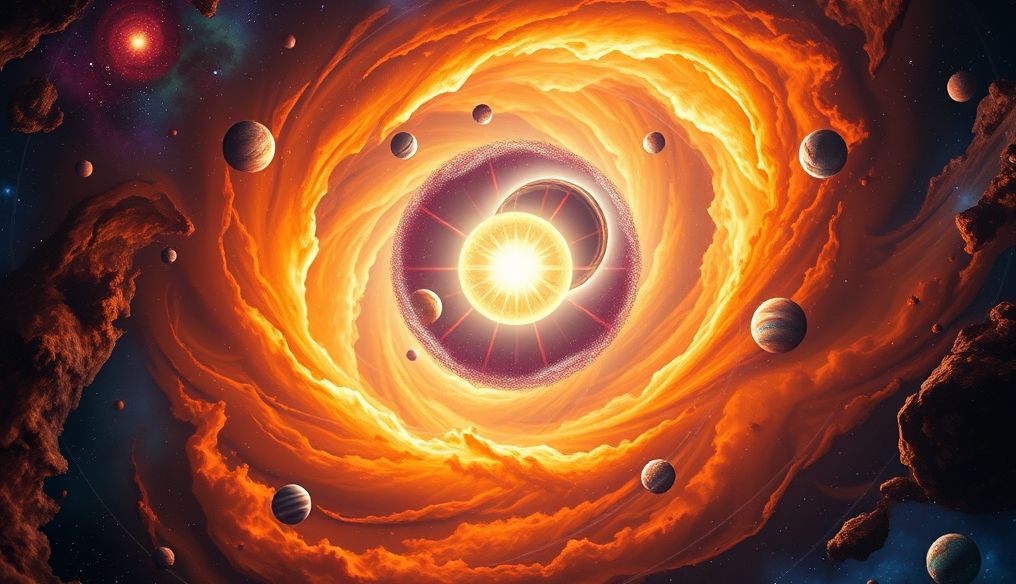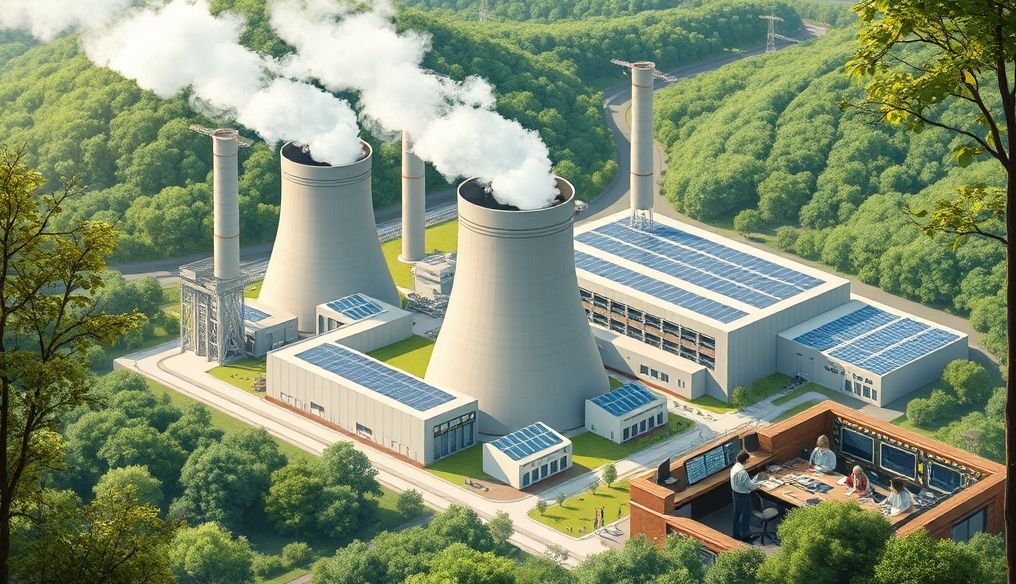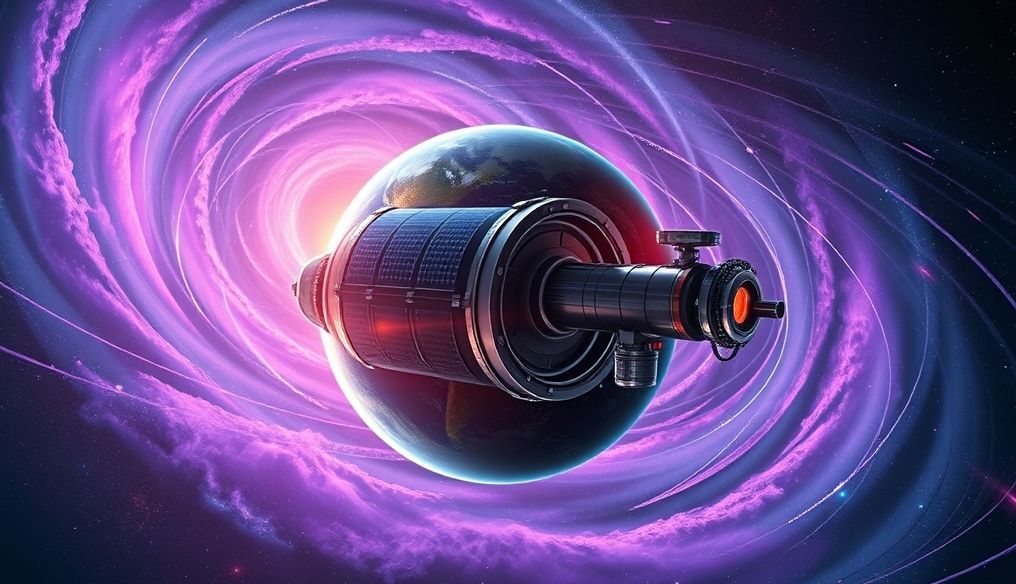Introduction: Nuclear Energy Between Hope and Fear
Nuclear energy, a source of power that evokes as much controversy as it does admiration. It has long been considered a promising solution to meet our growing energy needs while reducing reliance on polluting fossil fuels. However, incidents like Chernobyl and Fukushima remain stark reminders of the potential risks. This article aims to provide a comprehensive analysis of nuclear energy, from its basic principles to an assessment of its safety and effectiveness.
1. How Does Nuclear Energy Work?
Nuclear energy relies on the process of nuclear fission, where the nucleus of a heavy atom (usually uranium-235 or plutonium-239) is split into two smaller nuclei, releasing a tremendous amount of energy in the form of heat and radiation. This heat is used to boil water and convert it into steam, which in turn drives turbines to generate electricity.
1.1. The Nuclear Reactor: The Heart of the Process
The nuclear reactor is where nuclear fission occurs in a controlled manner. The reactor consists of:
- Nuclear Fuel: Usually in the form of enriched uranium rods.
- Moderator: A substance that slows down the movement of neutrons to make them more effective in causing fission. Heavy water or graphite are common moderators.
- Control Rods: Made of materials that absorb neutrons, used to control the rate of nuclear fission.
- Coolant: A substance that transfers the heat generated from nuclear fission. Water is the most common coolant.
- Containment Structure: A robust structure designed to prevent the leakage of radiation in the event of an accident.
1.2. The Nuclear Chain Reaction
When a uranium-235 nucleus splits, it releases additional neutrons. These neutrons can collide with other uranium nuclei, causing them to fission and release more neutrons, and so on. This process is called a nuclear chain reaction. This chain is controlled using control rods to ensure it doesn't get out of hand.
2. Benefits of Nuclear Energy
Despite the concerns surrounding it, nuclear energy offers several benefits:
- High Energy Output: A single nuclear power plant can generate a large amount of electricity, enough to power hundreds of thousands of homes.
- Low Carbon Emissions: Nuclear energy does not produce greenhouse gas emissions during operation, making it a cleaner option compared to fossil fuels.
- Reliability: Nuclear power plants can operate 24/7, regardless of weather conditions, unlike renewable energy sources like solar and wind.
- Diversification of Energy Sources: Nuclear energy helps reduce reliance on imported fossil fuels, enhancing energy security.
3. Risks of Nuclear Energy
The risks associated with nuclear energy cannot be denied:
- Nuclear Accidents: Accidents like Chernobyl and Fukushima show that human error or natural disasters can lead to nuclear catastrophes with dire consequences for health and the environment.
- Nuclear Waste: Nuclear waste remains radioactive for thousands of years, requiring safe and long-term storage solutions.
- Nuclear Weapons Proliferation: Nuclear technology can be used to produce nuclear weapons, increasing the risk of nuclear proliferation.
- High Cost: Building and operating nuclear power plants is extremely expensive.
4. Nuclear Waste Management: The Biggest Challenge
Nuclear waste management is one of the biggest challenges facing the nuclear energy industry. Nuclear waste consists of various radioactive materials, some of which remain radioactive for thousands of years. Current solutions include:
- Interim Storage: Storing waste in cooling pools or special concrete containers at the nuclear plant site.
- Deep Geological Storage: Burying waste in stable rock formations hundreds of meters below the Earth's surface.
- Reprocessing: Processing waste to extract reusable materials, reducing the volume of radioactive waste.
5. Nuclear Safety: Stringent Preventive Measures
Nuclear safety is the top priority in the nuclear energy industry. Preventive measures include:
- Safe Reactor Designs: Developing safer reactors, such as Generation IV reactors that use new technologies to reduce the risk of accidents.
- Strict Operating Procedures: Following precise operating procedures and continuous monitoring to ensure reactor safety.
- Intensive Training for Workers: Training workers to handle emergencies and take appropriate action.
- International Oversight: Nuclear power plants are subject to international oversight by the International Atomic Energy Agency (IAEA) to ensure compliance with safety standards.
6. Nuclear Energy and the Environment: Comparison with Other Sources
Compared to other energy sources, nuclear energy has different environmental impacts:
- Compared to Fossil Fuels: Nuclear energy produces significantly fewer greenhouse gases compared to fossil fuels.
- Compared to Renewable Energy: Nuclear energy requires less land area compared to large solar and wind power plants. However, renewable energy does not produce nuclear waste.
7. The Future of Nuclear Energy: Promising New Technologies
The field of nuclear energy is constantly evolving, with promising new technologies emerging:
- Generation IV Reactors: Safer and more efficient reactors, using different fuel cycles to reduce nuclear waste.
- Small Modular Reactors (SMRs): Smaller and less expensive reactors that can be built in factories and transported to different locations.
- Nuclear Fusion: The process of merging light atomic nuclei to produce energy, a relatively clean and safe process, but still in the research and development stage.
8. Nuclear Energy in the Arab World: Opportunities and Challenges
Some Arab countries are moving towards nuclear energy to meet their growing energy needs and diversify their sources. The United Arab Emirates is the first Arab country to operate a nuclear power plant (Barakah plant). Other countries such as Egypt and Jordan are considering building nuclear power plants. The challenges include:
- High Cost: Building nuclear power plants requires huge investments.
- Technical Expertise: Operating and maintaining nuclear power plants requires high technical expertise.
- Security Concerns: Ensuring the security of nuclear power plants and protecting them from terrorist attacks.
- Community Acceptance: Building public trust in the safety of nuclear energy.
Conclusion: A Comprehensive Assessment of Nuclear Energy
Nuclear energy represents a complex solution to energy challenges. It offers significant benefits in terms of clean energy production and reliability, but it also carries significant risks in terms of nuclear accidents and nuclear waste. The future of nuclear energy depends on developing safer and more efficient technologies, finding sustainable solutions for managing nuclear waste, and building public trust in the safety of this technology. The decision on whether to use nuclear energy should be based on a careful assessment of the risks and benefits, taking into account local needs and environmental conditions.




